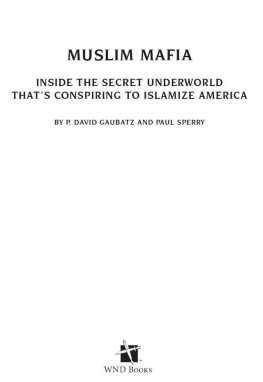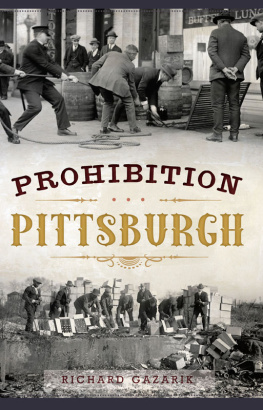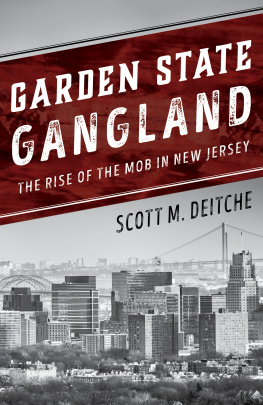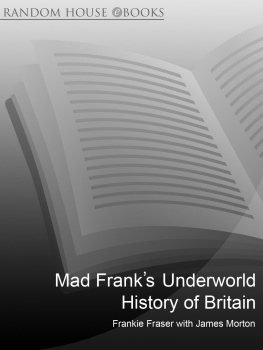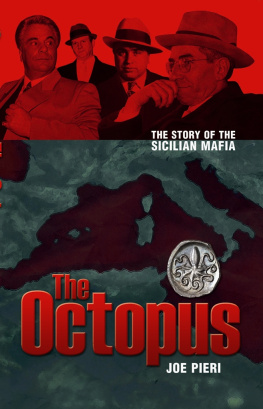Published by Barricade Books Inc.
185 Bridge Plaza North
Suite 308-A
Fort Lee, NJ 07024
www.barricadebooks.com
Copyright 2004 by Scott M. Deitche
Paperback Introduction 2005 by Scott M. Deitche
All Rights Reserved.
No part of this book may be reproduced, stored in a retrieval system, or transmitted in any form, by any means, including mechanical, electronic, photocopying, recording, or otherwise, without the prior written permission of the publisher, except by a reviewer who wishes to quote brief passages in connection with a review written for inclusion in a magazine, newspaper, or broadcast.
Library of Congress Cataloging-in-Publication Data
Deitche, Scott M.
Cigar City mafia : a complete history of the Tampa underworld / Scott M. Deitche.
p. cm.
Includes bibliographical references and index.
ISBN 1-56980-266-1 (hc)
ISBN 1-56980-287-4 (pb)
1. Mafia--Florida--Tampa--History. 2. Organized crime--Florida--Tampa--History. I. Title.
HV6452.F72M343 2004
364.1060975965--dc22
2003063767
ISBN 13: 978-1-56980-287-8
Fourth Printing paperback edition
Manufactured in the United States of America
To my parents who first encouraged my writing.
To my wife who keeps me writing.
Preface to Paperback
W hen Cigar City Mafia was released on January 18, 2004, I was a little unprepared for the reception it got. I had my first book signing that evening at Inkwood Books in Tampa. I arrived an hour early and was informed that all 80 copies of my book had been sold out since 4pm that day. By the time my signing started, over 100 people crammed into the bookstore to hear my talk on the Tampa mob.
It was during the question-and-answer section of my talk that I realized how many people that grew up in Tampa knew the characters in the book. Tampa had always been a small city where people knew one another, especially in the ethnic enclaves of Ybor City and the still-Latino West Tampa.
I was peppered with questions and stories for over an hour. It was a great feeling to write something that connects with people, even in the weird-way a book about organized crime does. The best part, though, were the people themselves.
Hundreds came to my book signings and appearances to share their stories. Some were quite memorable. There was the woman who learned to drive in Jimmy Lumias car, after he was killed in it; the widow of a top hitman; Santo Trafficante Jr.s old tailor; a former bolita peddler; a former pit boss at the San Souci; an old bookie from West Tampa; a woman who remembered hearing Joe Diaz get shot and saw the hitman get into the getaway car; and dozens of relatives of guys in the book. I talked with dozens of current and former law enforcement officials, neighbors of the guys named in the book, residents of old Ybor, politicians, business leaders, and yes, a couple of the characters themselves even came to my book signings.
In doing the research for any book, authors often times have to grapple with the limitations of the information available. This is certainly the case in writing about organized crime. I took care to make the book as accurate as possible, but many times newspaper accounts and even police reports and court records failed to accurately convey information. Case in point was a photograph I got from the police of a man said to be Trafficante soldier Phillip Piazza. The name and birth-date checked out on the arrest record. But evidently, back in the late 1950s, someone messed up and I ended up with a picture of an unknown man. That was pointed out to me by the granddaughter of Piazza and later someone that knew him.
The overwhelming response to the book has provided me access to new information from various sources. I have revised and updated this edition to include all of that information. With so much information coming in from emails, phone calls, and people talking to me at the signings, I had to limit what new material I could add. I updated and revised theseveral chapters and the cast of characters. I also added some additional information on Red Italiano, Sam Cagnina, Ignazio Antinori, and Santo Trafficante Jr. Some of it will appear in future projects and I always welcome more.
One section that needed a lot of additions was the Acknowledgements. I first want to thank the staff at Barricade Books for all their hard work. A big thanks to Jennifer Iskevitch, for all the publicity help; Jeff Nordstedt, for making the book look great; Albertha ONeill; Allan Wilson; Omar Cabrera; and of course, Lyle and Carole Stuart for their initial interest and continued support of the project.
I want to thank former and current law enforcement members Bill Iler, Ken Hoskins, Dick Rivett, Nelson Otero, and RJ Tsassoras.
Thanks to Lawrence Schuler (keep on digging), Benjamin Buckley, Jerry Garcia, Malio Iavarone, Sam Cagnina III, John Galatolo, Ralph Rubio, Regina Peralata, The Tampa Junior League, FALI, The Sertoma Club, Friends of St. Pete Beach Public Library, Tampa Junior League, Ricky Dawes, Patrick Downey, Dennis Schroder Jr., and Ray Fontana. I want to give a special thanks to the stickmen, fishermen, amateur politicos, and beyond-nice people at the Florida Sportsman Fishing Forum, for their support, interest, and tolerance of my shameless self-promotion.
On the media front, thanks to Kathy Fountain, Jeff Peterman, Tamara Lush, Jeff Testerman, Lenny Savino, David Agresti, The Discovery Channel, WFLA, NPR, WQYK, WMNF, W LRN, The Radio Detective, Florida International Magazine, Trevor Aaranson, David Blinn, Smoke Magazine, The Tampa Tribune, The St. Petersburg Times, The Orlando Sentinel
And the biggest thanks goes to all the booksellers who helped me with the signings and pushed my book to make it the success that it has become. If I forgot anyone, I apologize. Thanks to Trish Lawrence and Mimi Sandoval at Borders; Ray at Haslams; Pat at Waldenbooks in Citrus Park Mall; Nancy Barber and Stacy Barnard at Barnes and Noble; the staff at Circle Books; Inkwood Books; Murder At The Beach; The Pipe Den in Vero Beach; Books N Books in Coral Gables; and the staff of the Borders and Barnes and Noble stores in St. Petersburg, Tampa, Clearwater, Brandon, Winter Park, Naples, Livingston, Holmdel, East Brunswick, and Bridgewater Commons.
Scott M. Deitche
February 2005
Original Preface
T he city of Tampa, Florida rarely comes to mind when one thinks of the Mafia. Few outside Florida, unless they have a keen interest in organized crime, have heard the name Santo Trafficante Jr., or are aware of the vast criminal empire he oversaw. Few are aware of the deep political corruption and pervasive influence of organized crime on local politics. Few are aware of the hits, missing mobsters and daytime shoot-outs that plagued Tampa for decades.
The subject of mafia activity in Tampa is fascinating. More importantly, it is a distinct part of Tampas history, one that many people have tried to sweep under the rug over the years.
Decades of newcomers to the Tampa Bay area have swelled the citys population to more than 2 million, yet the same political players have remained in charge over the years, granting the same protection to the mob. Recent corruption allegations in Hillsborough County are strikingly similar to inquiries of the 1950s, 60s, 70s and 80s. However, many of the new residents are unaware of Tampas rich and varied gangland history, and how it extended across the globeand across the decadesto influence events that are shaping the region even today.




